How to Get Rid of Chipmunks Around Your Garden

For many of us, our yards are our oasis—where we spend time with friends and family, where we soak up the sun, where we grill, drink, and simply enjoy what the seasons have to offer. Your home’s green space is also the perfect place to show off your gardening skills, all while admiring the wildlife and the beauty of nature.
If your yard is something you take pride in, then it can be disheartening when it’s damaged by pests. Digging animals, like chipmunks, often make homes in the well-hidden spots in our yards, and while we’d like for them to stay in their natural habitat, their activity can seriously harm our property if they get out of control.
Luckily, there are plenty of ways to get rid of the little critters without harming them, and this guide will show you how.
Photo via Shutterstock
What Attracts Chipmunks to Your Yard
Chipmunks are small, squirrel-like animals that inhabit areas of the Midwest and eastern United States (per Cornell University).
Like other woodland creatures that dwell in forested areas, they’re a minuscule part of a vast ecological system, and although it comes as more of a nuisance, your yard is a part of their natural habitat. As a result, you may find some burrows and other signs of the animals in your landscaping.
The following are reasons why chipmunks might be in your yard:
Food
If you spot chipmunks scurrying around your property, it’s also likely they’re looking for something to eat. An omnivorous diet means that chipmunks are constantly on the lookout for seeds, nuts, grains, berries, insects, and small animals like salamanders.
If there’s a vegetable, fruit, or flower garden in your yard, those are prime locations for a chipmunk’s next meal—and you may notice some disturbances amongst your vegetation.
Shelter
Your yard might just be a safe haven for chipmunks, as well. The creatures are small and preyed upon by all sorts of predators, like coyotes, foxes, raccoons, and owls.
In populated, suburban neighborhoods, sightings of these bigger predators tend to be rare, making areas like your yard the perfect place for a chipmunk to start digging their next burrow.
Can Chipmunks Damage Your Property?
Although Chip and Dale might be small, cute, and seemingly harmless critters, they can inflict a number of problems on your property if they settle down with some friends and overstay their welcome.
Chipmunks live in burrows and spend their days creating a vast system of interconnected tunnels underground. Here, they hide from predators, travel safely, store food, and have a warm, quiet place to enter hibernation come fall (via Cornell University).
Although these tunnels are small—you won’t find any obvious mounds of dirt, like with moles—they can cause serious structural damage to areas in your yard and around your house as the system grows.
Entrance and exit holes to these burrows are usually located near or along the edges of man-made structures like sidewalks, stairs, patios, and sheds. As the respective tunnels begin to grow in number, they can weaken the foundational structures above them. This, unfortunately, can include the foundation of your house.
A colony of busy chipmunks loosening the soil beneath your home is an open invitation for water to enter the weakened space, which can lead to further damage or even the collapse of unsupported foundational slabs (via Westchester Wildlife).
Your yard isn’t exempt from chipmunk destruction, either. Depending on where they decide to dig burrows, landscape damage is common and can be an eyesore with high costs to repair.
As mentioned in the above section, “What Attracts Chipmunks to Your Yard,” the animals feed off of crops commonly found in your yard. Their presence in gardens, and in the wooded areas that provide shelter for climbing and scavenging, can lead to ruined gardening beds, damaged crops, and ravaged bird feeders.
How to Identify a Chipmunk Infestation
They might be cute—especially when they have their cheek pouches full of food—but chipmunks can be a nuisance and grow into a larger problem when they overtake your yard.
Noticing one or two of the critters every few days doesn’t mean you have a full-fledged chipmunk infestation on your hands, but according to Greenwood Nursery, if you start to notice the following signs, it might be worth considering a response:
- Small holes around your home foundation, lawn, landscaping, pathways, and outdoor walkways
- Piles of sunflower seeds, corn, or grain in your lawn, around your patio, or near a woodpile
- Uprooted bulbs or similar disturbances in your garden beds
- Low-hanging crops, like tomatoes, damaged by animal feeding
- Traces of seeds near outdoor pet-feeding areas, bird baths, and bird feeders
If you suspect that chipmunks have made themselves at home in your yard, it’s a good idea to do a thorough inspection, either by yourself or with a professional. Walk around your home and take a good look for burrow entrances in your landscaping, under rocks, near walkways, and along the sides of your home. Also, inspect your garden for signs of damage.
Photo via Debbie M
How to Get Rid of Chipmunks
The pests can be tricky to manage, but it’s possible. From repelling them to trapping them to modifying your yard, there are several options you can consider when it comes to clearing chipmunks from your property.
Deter Them
You can manipulate your yard, patio, garden, or other affected areas to keep chipmunks at bay and prevent further damage. The Humane Society of the United States recommends the following tactics to make your property less desirable for the little critters:
- Use the appropriate gardening materials. Shop for a fertilizer that is free of materials that could potentially attract chipmunks, and use plant-free gravel to line at-risk areas in your yard. For example, steer clear of fertilizers containing bone meal or fish emulsions.
- Protect your bird feeders. Take steps to clean up seeds that have been emptied in the area around your feeder. There are plenty of ways to guard your feeder against chipmunks and squirrels—wrapping an old slinky around feeder poles can prevent the critters from climbing up them. Another hack is to drill a hole in a frisbee, slide it halfway up your bird feeder pole, and secure it with duct tape. Also consider selecting a type of seed that chipmunks avoid, like Nyer or bitter safflower.
- Use a rodent repellent spray. Repellents that are labeled to keep away mice and squirrels will often do the trick for chipmunks, too. Small rodents hate peppermint oil, so mint sprays that are safe for the environment and non-toxic are worth looking at.
- Plant daffodils and protect your bulbs. Opting to plant daffodils—natural repellents, along with garlic—might save your garden from destruction come springtime. They’re less attractive to animals than other types of plants; you can even plant them in a protective border around the more desirable bulb varieties. You can also soak your bulbs in a thiram-based repellent before planting to deter the woodland critters.
Photo via Shutterstock
Use Fences, Barriers, and Landscape Alterations
To take on more heavy-duty chipmunk dilemmas, you might need to get creative with some hands-on projects. Specific kinds of fences, barriers, and landscape modifications can prove successful when it comes to keeping chipmunks out of your garden beds and away from your home.
If you haven’t had luck with repellents or minor modifications, it might be time to consider the following tactics:
- Adjust landscaping areas. Rock piles, firewood stacks, and overgrown hedges and plants provide shelter and safety for chipmunks living in your yard. Try to reorganize outdoor areas or relocate rocks and wood. Trimming back overgrown greenery also makes these popular hiding spaces less protective.
- Use bulb cages or groundcover sheets in your garden. Chipmunks spend a lot of time digging and like to uproot bulbs and vegetables. If daffodils and repellents haven’t scared away chipmunks, use bulb cages to protect your plants—they should leave about an inch of room on all sides, enough room for the plants to sprout, but not enough for pests to gain access. Or, plant your bulbs under a sheet of wire ground covering.
- Use an L-shaped footer in at-risk areas. To properly keep digging pests out of your garden or away from the edges of landscape areas, a fence is usually required above and below the ground. For burrow hotspots along garden edges, create an L-shaped footer to prevent access to your crops from underground. By extending the aboveground mesh fencing downward (about a foot underground around the edges of your garden), and shaping the sheet to create a letter “L” below the soil, you create an underground barrier that makes accessing your growing goodies a difficult task for hungry chipmunks.
- Close burrow entrances. Limit access to established burrow systems by using hardware cloth to keep the critters out. And make sure any openings to your home are caulked and sealed—the last thing you want is a chipmunk getting cozy in your home.
Trap Them
If your chipmunk problem is out of hand, you may want to consult a professional, set up traps, or both. Some states have laws to protect certain wildlife or limit relocation to people with special licenses, so make sure to do your research prior to deciding on what trapping methods you’ll use. Below are some methods to consider if you’ve tried repellents and yard modifications without any luck:
Trap Method 1: Wire mesh/live catch traps
Live catch traps are an efficient way to capture chipmunks that have been doing damage to your property one by one. Once you set them up, just wait and the traps will do all the work. Here are some steps for successful trapping.
- Purchase a trap. You can find them at local hardware stores or online. Make sure you select one that is a “live catch” model.
- Locate an area in your yard to set up the trap. Traps work best when they are placed in high-traffic chipmunk areas, usually where they travel or feed (per University of Missouri).
- Prebait your trap. Chipmunks munch on seeds, nuts, raisins, and grains. Place these snacks in and around your trap to lure the critters, but don’t set the trap quite yet. It’s smart to wire the doors open so that the chipmunks can spend a few days feeding and feel safe before you set the trap to catch them.
- Set the trap. Follow the device instructions to set and load the trap.
- Catch and release. Check your traps daily to see if you’ve been successful. If you’ve managed to catch a chipmunk, relocate it to a spot about a mile away. Again, make sure you’re up to date on relocation policies in your state.
Trap Method 2: Snap Trap
Although less humane than live catch traps, rat-sized snap traps are also efficient in ridding your property of chipmunks and the damage that they inflict. These are the same traps often used for getting rid of mice, only bigger.
Follow the same instructions for preparing a live trap, except use peanut butter as bait directly on the trap, and be ready to properly dispose of the animal afterward.
Deterring chipmunks from your garden requires a multi-faceted approach. By combining the above methods and staying vigilant, you can enjoy a beautiful and productive garden free from the disruptions of chipmunks.
Have other tips for preventing chipmunks from getting out of control? Let us know what’s worked for you in the comments below!



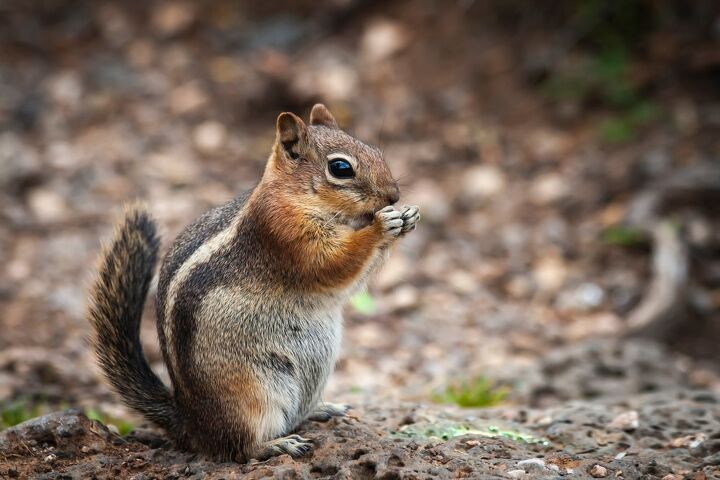


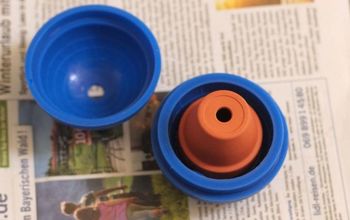
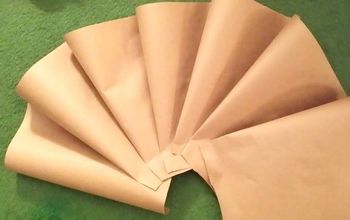

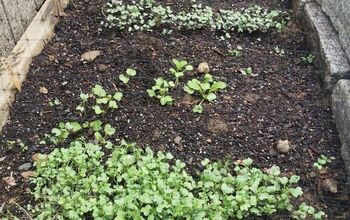

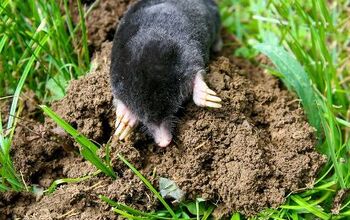

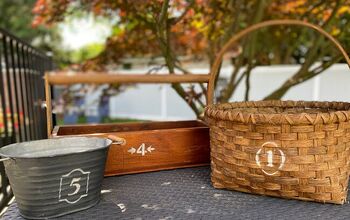

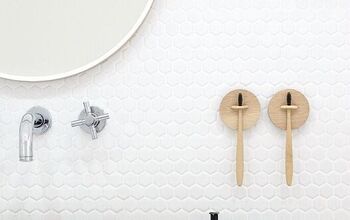










Frequently asked questions
Have a question about this project?